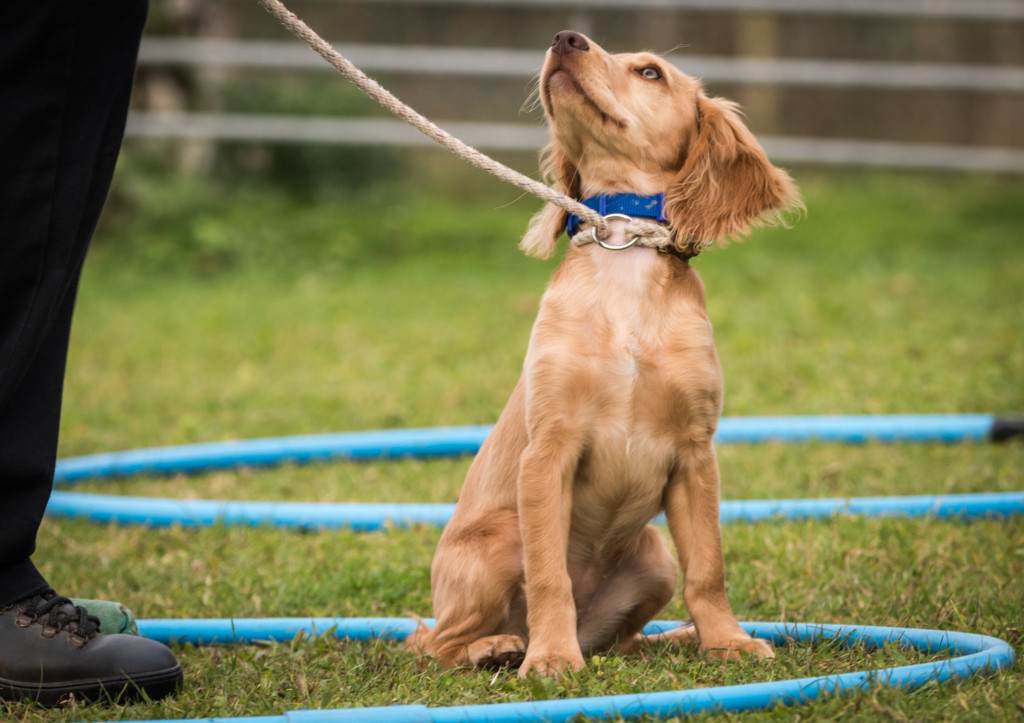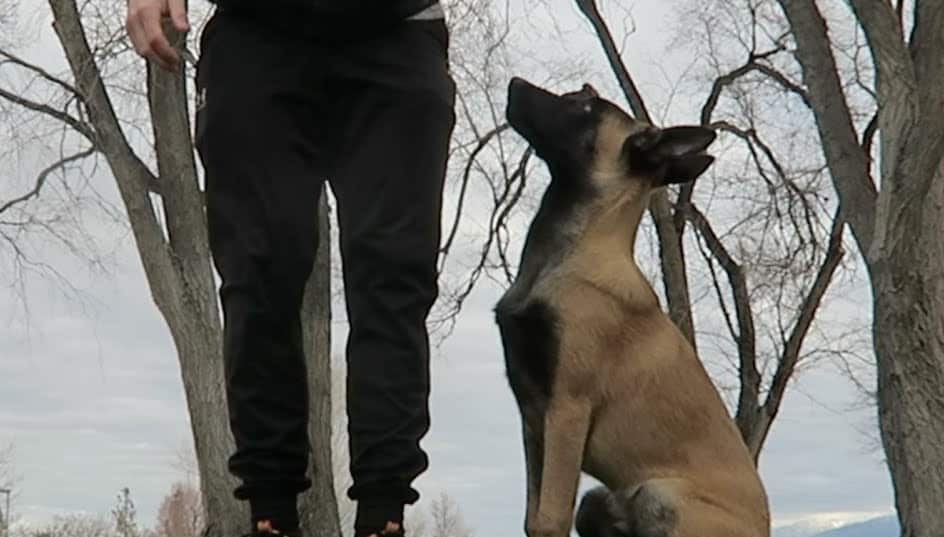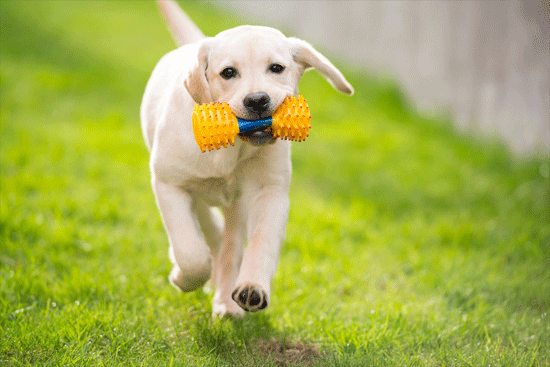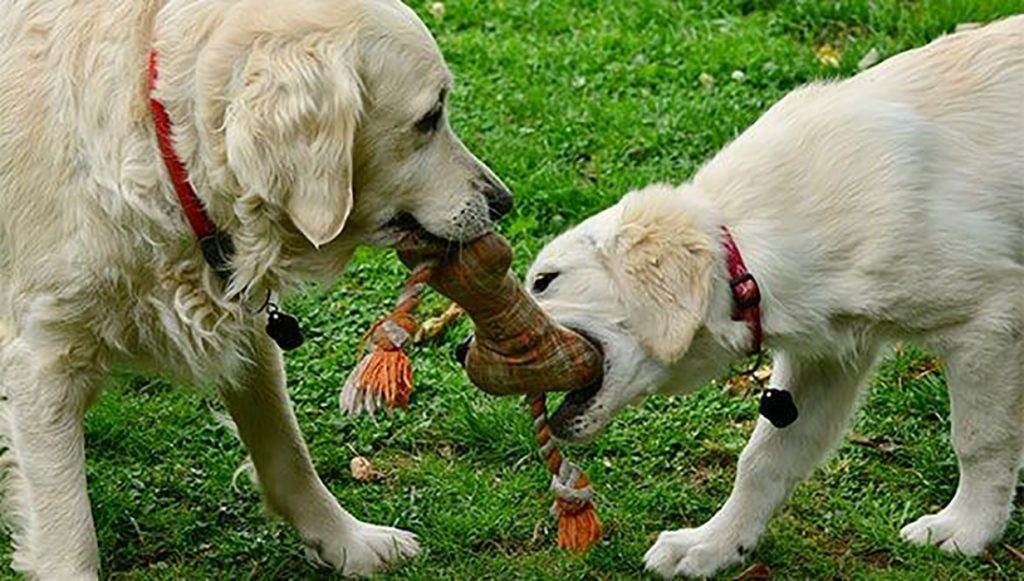Teaching a retriever is a very pivotal thing as there comes certain particular situation where you want your retriever to stop and then move ahead only on your command. This is where the ‘whistle’ part comes in play because at a greater remoteness, calling out your dog’s name or shouting commands isn’t probably going to be feasible. It’s important that he understand the command you’re conveying to him.
Also, you want him to stop or sit as soon as the sound of the whistle strikes his ear and not after strolling a bit here and there because a leisure stop or sit may end up your retriever behind some hindrance such as trees or shrubs where you won’t be able to spot them. Maybe, that may force you to change your position.
So, it’s quite important that your retriever respond instantly to your whistle. Another most important part and also the part most people just ignore unconsciously is you want your retriever to turn back and face you for your next command and not just sit there and enjoy the breeze. Now, let’s see how these could be done.
Upbringing of the Pup

We all know that young children are more enthusiastic learners than adults and same goes in case of your retriever. Learning to understand your commands as a pup will surely make his adult training much easier and perfect. It’s quite easy to teach a pup ‘sit on whistle’.
First of all, you’ve to teach your pup the ‘sit’ command. Hold a treat above your pup’s nose so that your pup can smell and know that there’s something yummy in your hand. Now, give a command ‘sit’ and as soon as your pup reaches for the treat, push him back forcing him to touch his rear end in the ground and reward him the treat each and every time you repeat this.
Just remember, repetition is the key to any successful retriever training. Eventually, he will plant his rear on ground as he hears you give the command ‘sit’. Also, he’ll understand that only if his rear touches the ground, he’ll be rewarded.
Now, comes the second part. Since your retriever can now understand the ‘sit’ command, it’s time to chain in the whistle sit. What you need to do is give a ‘sit’ command and instantly blow your whistle. Reward the sitting. Soon, he will understand that whistle blow and ‘sit’ command are the same and both indicates to touch his rear end to the ground.
The third part is making your pup to sit and stay until you release him from the ‘sit’ command. There are instances where you will notice that your pup will just touch his rear end to the ground and expect to be rewarded and so, you need to make it clear that he has to sit and stay until given another command. For a pup, this could be done with the help of a casket.
After the pup rests a bit in the casket, open the door and as the pup approaches the door, give him a ‘sit’ command and shut the door. Also impose hand gesture indicating ‘stay’. Keep on doing this until your pup waits for a few seconds and then use command like ‘break’ to release it from the command. Don’t wait too long as the pup would eventually move if it’s hope of releasing from the command fails. So, increase the stay duration gradually and not drastically or the pup would refuse to play the game. Also, reward must be given occasionally.
The fourth and final part is making the pup to watch you after staying. For this training too, casket would be very helpful. Allow your pup to enter the casket and as soon as he goes in the casket, give it a ‘sit’ command. Since the casket would be closed on all the three sides except for the opening part from where he entered, he’ll eventually turn back and will be watching you. Reward every time he watches you. By repetition, make this a habit, so that even in an open atmosphere, this drill should go better.
Now, what if I have an adult dog and I didn’t go through all this when he was a pup. Can I still train my dog to the ‘whistle on sit’ command? Yes, you can. Take a peep below.
For Those With Adult Dogs
- The Traditional Way: In older days, the method used was tying the rope to a tree or any such stationery object on one end and your dog on the other end and send him after a retrieve. As the dog gets pull backed by the end of the rope, whistle would be blown instantly. On repetition, you’ll see that your dog will stop on whistle and don’t forget to reward him for that. This seems to be a harsh way as it would be too hard on the dog’s neck. But, today, there are a lot of easier ways.
- The E-collar Technique: Now, e-collar is a good way to make your retriever go through your commands, but it should be clear for your retriever to understand that the command given using e-collar is ‘sit on whistle’ or else it will just return back to you. So, how to do that? First of all, the stimulation given should be mild and make your dog think that it’s turning off the stimulation by performing the command. To make you dog think that, you’ll have to use ‘continuous’ stimulation which is basically stimulating till the button is held down. Here is how to properly use the e-collar: First, make your dog sit. As soon as he tries to stand up, press the button and give the command ‘sit’. When he sits back down, release the stimulation. If you’ve read the article till now, you probably know how to chain in the whistle with your command.
Even after this, if your retriever isn’t responding to your command, like sort of moving around and then finally obeying, then buckle the collar around his waist so that the contact points would be on the rump and most dogs are sensitive to rump than on the neck. First, let him get comfortable with the buckle around the waist and also, do remember to lower the stimulation intensity by a couple points and then proceed with the drill. When you see that now your dog is responding quick enough do move back the collar to his neck and repeat till perfection. Also, don’t forget about rewards. - ‘Traffic Cop’ Technique: This helps for your dog training routine if he is already familiar with the ‘sit’ and ‘stay’ command. So, make your dog ‘sit’ and throw a bumper a few yards away. Make sure your dog ‘stay’ and you walk about more than half your path towards the bumper. Now, you’re standing in between your dog and the bumper. Then, you release your dog from the command and as he runs for the bumper and gets closer to you, step in front of him and use the command ‘sit’. Use hand gestures if necessary and if this goes well, you are already enlightened of how to chain this with the whistle blow.
Adding Distance
You never start this ‘sit on whistle’ technique directly from a large distance such as 200 yards. Distance has to be gradually increased from short-range to mid-range to long-range. Start from around 15 yards. Make the training perfect and go to 20 yards.Then, move to 25 and so on.
If the dog is facing a issue of any sorts at 25 yards distance, take him back to 20 yards section till it’s perfect and then carry on. And finally, it will happen that you’re controlling your retriever from a 500 yards mark. Training your retriever isn’t going to be a one-day process. It has to be built on with patience and repetition.
The Whistle Intensity and Timing
Well, it would be recommended to practice blowing your whistle with loud and intense sound. It should act as an absolute command. A whistle blown with low intensity would be assumed as a lack in authority by the dog, and this will be more than enough to ignore a whistle command in many circumstances.
Also, timing is very important. So, as soon your dog is released on a retrieve, immediately put the whistle on your mouth and be ready. A late whistle can run your dog into a lot of trouble. So, do your part accurately.
Reward Dog on Whistle

Rewarding your dogs with a treat is a great way to make your dog understand that it has just done something correct. For instance, after giving a ‘sit’ command, as soon as the rear touches the ground, reward your dog with a treat. This works for all type of your dog’s conduct and hence, reward wherever needed accordingly in the drill sessions. Also, understand the concept of increasing the reward.
Now, when you’re giving a ‘sit on whistle’ command to your retriever in 20 yards distance, the probability of his understanding will be more than those given around a distance of 100 yards. So, the problem is way far out when you’re way far in. So, first of all, make sure the basics of your retriever is all good and then, also increase the reward of your retriever when he’s far out in mid-range and long-range distances.
Facing the Handler
For a pup drill, we’ve already said what could be done above by simply using a casket. But, for an adult dog, that method is not going to work great. So, how? Don’t you worry, every problem has a solution. So, here, the solution is simple but effective using a fun bumper.
First, simply make your retriever sit using ‘sit on whistle’ command, and then you walk a few steps away facing your dog and release him from the command and that very instance, throw a fun bumper towards him. After repetition, he will be anticipating a fun bumper throw as soon as the ‘sit on whistle’ command is obeyed by him.
Next, after giving a ‘sit on whistle’ command, walk away few steps behind the retriever or maybe you can send your retriever to a point. As soon as the ‘sit on whistle’ command is put, he’ll anticipate a bumper throw and will surely turn back to look at you.
Fixing Up
- Never accept a looping sit on ‘sit on whistle’ command. Do not give him a treat for that. Also, quickly enforce ‘sit on whistle’ command again and only when perfect, reward. If you’re seeing this looping sit very frequently, then your retriever cannot handle the length of the drill at this stage and so, you’ve to shorten it until you see a desired sit.
- May be, your retriever is lying down when the whistle is blown. So, what you have to do is first make your retriever to lie down and then, make him sit upright just after the whistle is blown. Do this with the help of overhead leash pullback or e-collar stimulations. Repetition will make it up better.
- There comes a situation where you will be not acting as a strict handler and will be over-friendly with your retriever. When in such a situation, throw a bumper and give a ‘sit on whistle’ command and see if your retriever obeys it. If not, go to the foundation and repeat everything again and come to a situation that in any case, happy or strict, he has to obey the command given.
- Last, but not the least, for e-collar users, you must understand that sound doesn’t travel faster than e-waves. So, while giving a command on a long-range, blow up your whistle and then stimulate your retriever. You’ll eventually get the timing perfect.
With any retriever training, as said earlier, PATIENCE and REPETITION is the key to success. Hope you’re quite enlightened with this topic.
Table of Contents






